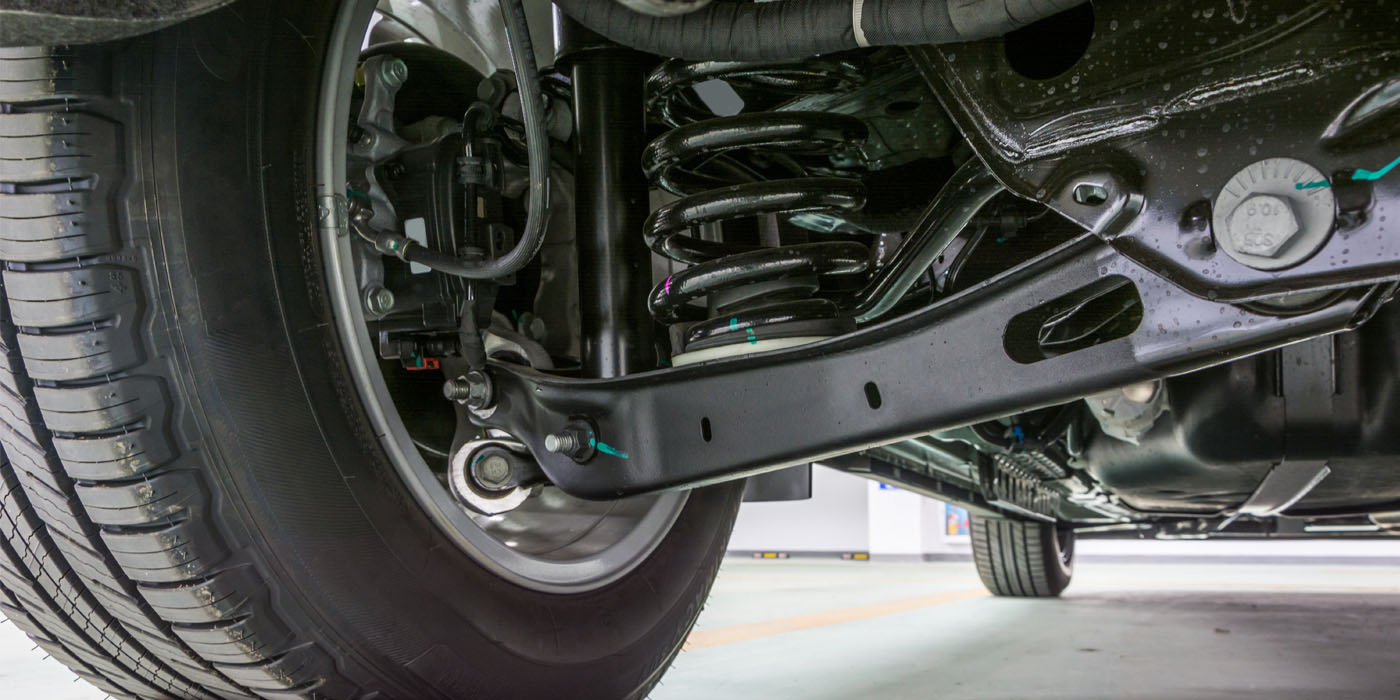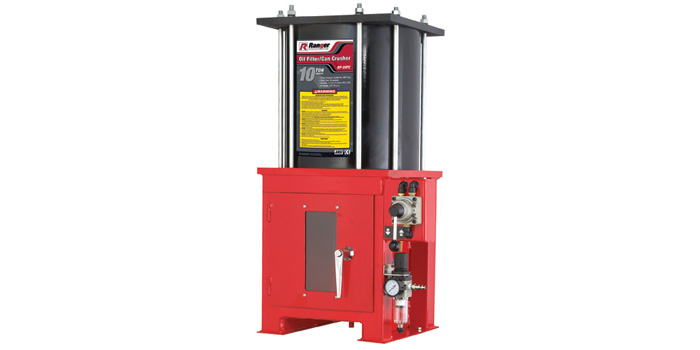As more hybrid vehicles start filtering into collision repair facilities, you and your staff will need to focus on the many procedures manufacturers provide to properly handle and repair them. Aside from the complex electrical systems on these vehicles, each one may have a unique mechanical system. For instance, what we may have thought was just another air conditioning system on a similar non-hybrid vehicle will not be the same on a hybrid vehicle.
The following article explains flushing procedures and the unique lubricants exclusive to General Motors hybrid vehicles.
Service Information
Always refer to ALLDATA Collision for safety procedures, identification of material types, recommended refinish materials, and removal and installation procedures. Always refer to the vehicle manufacturer for questions relating to applicable or non-applicable warranty repair information.
Application
Bulletin No. 08-01-39-001B
NOTE: This bulletin has added the Chevrolet Silverado and GMC Sierra hybrid models. Discard bulletin no. 08-01-39-001A (Section 01 – HVAC).
• 2009 Cadillac Escalade Hybrid
• 2008-2009 Chevrolet Silverado Hybrid, Tahoe Hybrid
• 2008-2009 GMC Sierra Hybrid, Yukon Hybrid with two-mode hybrid system (RPO HP2) and electric air conditioning (A/C) compressor
Procedure Guidelines
The following hose flushing procedure must be performed every time the ACR2000 (J-43600) is used on these hybrid vehicles. It must be completed before the ACR2000 (J-43600) is connected to the vehicle to begin a diagnostic or service procedure.
The two-mode hybrid (RPO HP2) air conditioning system is a unique, electrically driven, high-voltage (300V) system. The guidelines presented in this bulletin need to be strictly followed when servicing this hybrid system to ensure that system performance and durability aren’t compromised.
The two-mode hybrid system uses the same R-134a refrigerant as all GM cars and trucks built since 1994. The two-mode A/C system doesn’t use the traditional polyalkylene glycol (PAG) oil to lubricate the system. The two-mode system uses a special low-moisture content polyolester (POE) oil to lubricate the system components. The 300-volt compressor used in this system is sensitive to moisture in the A/C system and may become damaged if the moisture content becomes too high. Excessive moisture will damage the insulation inside the electrically-driven compressor.
• Always follow all high-voltage safety procedures when servicing a two-mode hybrid A/C system.
• Use only the GM-approved POE oil in this system. The GM part number is 88862657. This part is a 3.5-oz tube of injectable oil that’s packaged with a desiccant inside a foil poly bag. This special POE oil is intended to be used with the J-45037 A/C oil injector and the GE-48997 A/C POE oil injector hose.
• Do not use POE oil that has been open to the atmosphere (outside the poly bag) for longer than two hours. POE oil will absorb moisture from the air around it and can cause compressor damage.
• Do not use traditional PAG oil in the two-mode system. PAG oil contains enough moisture, even in small quantities, to damage the two-mode A/C compressor. If a system is accidentally cross-contaminated with PAG oil, a system flush must be performed to remove all oil and the system must be rebalanced with POE oil.
• Do not add fluorescent leak detection dyes to the two-mode A/C system. Most fluorescent leak detection dyes are carried in traditional PAG oil. The two-mode A/C system is built with a fluorescent leak detection dye wafer installed in the A/C accumulator. When the system is first used, the dye wafer will dissolve and dye will circulate throughout the entire system.
• Service replacement accumulators contain a dye wafer. If additional fluorescent leak detection dye becomes necessary, replacing the accumulator will add dye to the A/C system.
• If it becomes necessary to perform a system flush on the two-mode A/C system, the accumulator should always be replaced.
• The two-mode A/C system should remain sealed until you’re ready to complete work on the system. This will keep the POE oil and the system desiccant (contained in the accumulator) from absorbing moisture from the atmosphere.
• Minimize the time the two-mode A/C system is open to the atmosphere. If the two-mode system has been open to the atmosphere for more than two hours, it will be necessary to perform a system flush and replace the accumulator and all system oil. Take the necessary steps to seal the system if an A/C component is removed or the vehicle must remain disassembled for a long period of time.
A dedicated refrigerant recovery system is not required to work on GM hybrid vehicles. Special steps must be taken to ensure that the hybrid system is not cross-contaminated with PAG oil.
Always perform the ACR 2000 hose flushing procedure outlined below and in Service Information before recovering or recharging a two-mode A/C system. This will help avoid cross-contaminating the two-mode A/C system with PAG oil that could remain in the ACR 2000 from previous recovery events. In order to perform the hose flush, your ACR 2000 must have the J-43600-50 oil flush loop hose installed. The J-43600-50 hose allows you to connect the low-side coupler to the high-side coupler and flush the ACR 2000 hoses of all oil that may remain in the machine.
When replacing system components, always follow the oil balancing procedures listed in Service Information. This will assure that you have the correct amount of oil in the system.
Hose Flush Precautions
NOTE: The high-voltage (HV) electric A/C compressor used on these two-mode hybrid vehicles uses a POE refrigerant oil instead of a PAG synthetic refrigerant oil. This is due to the better electrical resistance of the POE oil and its ability to provide HV isolation.
NOTE: The following hose flush procedure is required to prevent oil cross-contamination. Laboratory testing has shown that flushing the ACR2000 (J-43600) using the following procedure will minimize oil cross-contamination to a negligible amount (< 500 ppm).
NOTE: Failure to flush the ACR2000 (J-43600) hoses before adding refrigerant to a hybrid vehicle with an electric A/C compressor may result in an unacceptable amount of PAG oil entering the refrigerant system. It may also cause a Battery Energy Control Module Hybrid Battery Voltage System Isolation Lost Diagnostic Trouble Code (DTC P1AE7) to be set. Additionally, the A/C system warranty will be voided.
NOTE: The ACR2000 (J-43600) will need to be retrofitted with a J-43600-50 (Hose-ACR2000 Oil Flush Loop) to be able to perform the following procedure. All hybrid dealers will receive a J-43600-50 with installation instructions, which is a component of the hybrid essential tool package. Dealers not included in the hybrid marketing plan and needing to service a hybrid vehicle can obtain the J-43600-50 from SPX Kent Moore.
The J-43600-50 retrofit kit replaces the existing hose mount fittings on the ACR2000. Installation instructions are included to properly update the ACR2000 for hybrid vehicle A/C service.
New hybrid compliant A/C refrigerant recovery recharging equipment (GE-48800) was released in January 2008 for dealers wishing to replace current ACR2000 equipment. GE-48800 meets new SAE refrigerant recovery standard J2788 and is specifically designed for General Motors hybrid vehicle A/C service.
Hose Flush Procedure
Always allow the ACR2000 to complete the hose flush cycle to assure that all oil and refrigerant is removed from the hoses and the ACR2000 flow control circuit.
Assure that the ACR2000 has at least 4.08 kg (9 lbs.) of chargeable refrigerant before proceeding.
A “low filter flow” message displayed during the hose flushing process indicates that you do not have the hose couplers connected and open.
1. Connect the ACR2000 service hose couplers to the J-43600-50 hose flush adapter fittings and open the service hose coupler valves.
2. Power on the ACR2000.
3. If there’s positive pressure in the ACR2000 service hoses, press “start” to recover the service hoses. If there is 88-98 kPa (26-29 in Hg) of vacuum showing on the display screen, skip to step 7.
4. Press “vacuum.”
5. Press “start.” Allow the vacuum program to run until the display screen shows between 88-98 kPa (26-29 in Hg).
6. Press “pause.”
7. Press “main menu.”
8. Press “scroll menu.”
9. Press “oil flush.”
10. Press “next.”
11. Enter “03:00” (for a three-minute flush) and press “start.”
12. The ACR2000 will now flush the service hoses for three minutes and then recover the refrigerant.
13. Close the ACR2000 service hose couplers and remove the J-43600-50 hose flush adapter.
14. The ACR2000 can now be connected to the hybrid vehicle to perform your A/C system diagnostic or service procedures.
Dan Espersen is a Gold Pin Member of the Collision Industry Conference (CIC) and holds an AA Degree in Automotive Technology. He has 17 years of experience in the collision industry and 17 years of experience in the automotive industry.
© 2009 ALLDATA LLC. All rights reserved. All technical information, images and specifications are from ALLDATA Collision. ALLDATA is a registered trademark and ALLDATA Collision is a mark of ALLDATA LLC. All other marks are the property of their respective holders.
© GM, General Motors, Cadillac, Escalade, Chevrolet, Silverado, Tahoe, GMC, Sierra and Yukon are registered trademark names and model designations of General Motors Corporation. All trademark names and model designations are being used solely for reference and application purposes.













